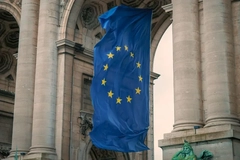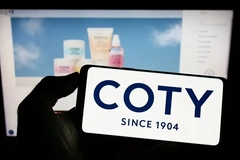Focus on fragrance: Tailoring scents for global appeal

The fragrance industry is being shaped by changing consumer scent preferences, digital influences, and balancing global and local market strategies. Brands adapt to these shifts by fine-tuning scent profiles and embracing social media and AI as innovation tools.
Market researcher Innova Market Insights’ 2025 data indicates that consumer fragrance habits are becoming more diverse, with digital platforms playing an increasing role in fragrance discovery — 41% of consumers browse online to compare prices, 23% seek brand information, and 25% read reviews before making a decision.
As fragrance houses expand into new markets, they must navigate differences in scent preferences, shopping behaviors, and the interplay between physical retail and e-commerce.
Personal Care Insights speaks to Brice Kadari, VP and brand lead at Le Monde Gourmand (LMG), about the US-based fragrance house’s expansion into the UK, and dives into the broader trends shaping the global fragrance industry with Givaudan and International Flavors & Fragrances (IFF).
Local adaptation
Global fragrance brands are moving into high-growth markets to meet consumer demand. LMG recently entered the UK market by launching through a major European online premium beauty retailer, LookFantastic.
“Our engagement with the UK fragrance community has been rewarding over the years, and we’re thrilled to bring our brand to a retailer with such extensive reach in this vibrant market,” says Kadari about the expansion.
Latin America is another region experiencing market development, with Givaudan investing in expanded production capacity in Mexico to support its growth in the personal care space.
Mauro Patrus, regional head of Consumer Products LATAM at Givaudan, recently told Personal Care Insights, “Latin America is a dynamic, high-growth market with specific needs and good potential for growth. This is an important region for us, and our different creative teams work hand in hand with our customers and local partners to innovate and offer fragrances and beauty solutions that enhance local consumers’ daily lives.”
IFF is taking a similar region-specific approach with its China Scent Exploration Program, which integrates historical research, consumer trends, and AI to develop fragrances that resonate with the Chinese market.
.jpg) Le Monde Gourmand's current most popular scent: Petale Ephemere.“China Scent Exploration is a market and consumer learning program. It aims to unlock the potential of the Chinese scent market by deep diving into the core of fragrance usage in China: its fragrancing history, the ingredients and products that form the collective olfactive memory of Chinese consumers, market evolution, and consumer trends,” said Arnaud Montet, VP of Human and Consumer Insights at IFF.
Le Monde Gourmand's current most popular scent: Petale Ephemere.“China Scent Exploration is a market and consumer learning program. It aims to unlock the potential of the Chinese scent market by deep diving into the core of fragrance usage in China: its fragrancing history, the ingredients and products that form the collective olfactive memory of Chinese consumers, market evolution, and consumer trends,” said Arnaud Montet, VP of Human and Consumer Insights at IFF.
To expand globally, LMG says maintaining brand identity while catering to regional preferences is a key strategy. Kadari highlights the company’s approach: “We see our community as a global tapestry, always thinking with a worldwide perspective when crafting new scents.”
Unexpected preferences
Evolving consumer preferences are shaping fragrance trends across global markets, requiring brands to remain agile in their approach. In the UK, LMG responds to shifting demand by monitoring product performance.
Kadari points to the unexpected success of LMG’s Pistachio Brûlée scent, which outperformed expectations and surpassed its popularity in the US. This, he explains, underscores the need for brands to continuously adapt to preferences, even within seemingly familiar markets.
Similarly, in Latin America, Givaudan recognizes the region’s strong affinity for fragrance and the opportunities it presents. “We as consumers are scent seekers, and the market growth opportunities are immense and spread throughout the region.”
Givaudan addresses this demand by expanding its production capacity in Mexico, aiming to meet the region’s growing appetite for scent-driven personal care products.
Retail and e-commerce
Finding an effective balance between physical retail for sensory consumer engagement and e-commerce for streamlined accessibility is a growing topic of discussion in the personal care industry.
“Much like in the US, we firmly believe in the power of retail presence. The UK’s e-commerce landscape is unique, but retail will be pivotal for our expansion beyond the UK,” says Kadari.
By embracing both digital and brick-and-mortar strategies, the company aims to position itself for sustained success in new markets.
Social media and AI.jpg) By embracing both digital and brick-and-mortar strategies, LMG aims to position itself for sustained success.
By embracing both digital and brick-and-mortar strategies, LMG aims to position itself for sustained success.
Beyond digitalization in retail, brands are navigating the headwinds of using social media as a marketing tool. Interactive social platforms offer brands the chance to expand their reach beyond traditional channels to access untapped audiences.
Kadari highlights the impact of social platforms: “Instagram and TikTok have been dynamic platforms for us, engaging new audiences worldwide with our brand’s story and essence”
However, beyond engagement, brands are leveraging these social channels for brand loyalty due to their ability to connect brands with consumers directly.
“For us, digital presence is not just a promotional tool — it’s a vital channel for sharing experiences and fostering meaningful conversations with our community and fragrance aficionados. It’s about creating connections, not transactions,” says Kadari.
As digital engagement continues to evolve, AI plays an increasingly significant role in fragrance innovation. IFF’s China Scent Exploration Program incorporates AI to translate consumer descriptions to inspire new fragrance formulations. At the same time, the company’s ScentChat facilitates direct communication between consumers and fragrance creators via messaging platforms.
“With the help of our internal AI capabilities, we can translate consumer descriptions into scent creation rules, greatly empowering our artists to create scents with relevance, benefits, and purpose,” Montet explained.
Clotilde Raz, senior manager of global Human and Consumer Insights at Scent at IFF, described this approach as “a huge leap forward, making innovation more efficient, immersive, and impactful.”
This technology-driven approach reflects the increasing role of data and direct consumer input in shaping fragrance innovation.
.jpg) Brands must navigate differences in local consumer preferences for scent creation.Emerging trends
Brands must navigate differences in local consumer preferences for scent creation.Emerging trends
Global fragrance trends are evolving, with gourmand scents — fragrances inspired by food and indulgence — and shifting consumption habits shaping brand strategies.
LMG responds to these market shifts by integrating these trends into its international expansion efforts.
“We’re witnessing tremendous momentum in the gourmand trend, affordable delicate fragrances, and evolving fragrance consumption habits globally. These trends are intrinsic to our brand identity and naturally guide our international expansion efforts,” he explains.
While LMG has already expanded into the UK, the company is evaluating additional global markets to enhance its connections with the global community.
In China, IFF takes a research-driven approach to fragrance adaptation to ensure its scents reflect cultural heritage and local sensorial preferences.
“One notable trend that emerged a few years ago and has now become integral to the Chinese scent market is ‘guochao,’ or ‘national wave.’ This refers to the rise of products that incorporate elements of traditional Chinese culture and style, refreshed with a modern twist,” said Montet.
To align with this movement, IFF focuses on key regional ingredients such as osmanthus and Chinese teas, leveraging AI-driven research to craft fragrances that resonate with local consumers.
As fragrance brands expand globally, their ability to adapt to regional trends through cultural insights, digital tools, and localized product development will be defining factors. Whether in China, Latin America, or the UK, consumer engagement and digital innovation are poised to define the future of fragrance expansion.












